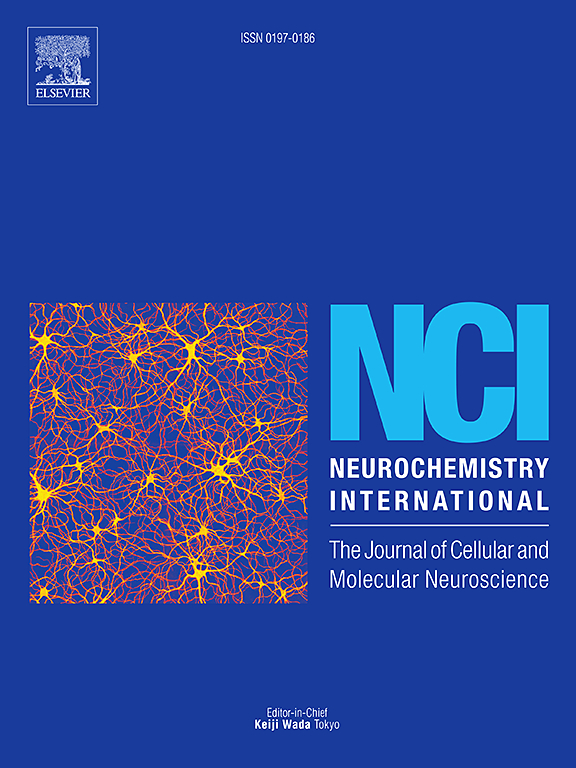Therapeutic potential of cell-permeable PEP-1-Srxn1 in mitigating oxidative and ischemic damage in the hippocampus
IF 4
3区 医学
Q2 BIOCHEMISTRY & MOLECULAR BIOLOGY
引用次数: 0
Abstract
In the present study, we validated the neuroprotective effects of sulfiredoxin 1 (Srxn1) against oxidative damage in HT22 cells and ischemic damage in gerbil hippocampus. To efficiently deliver Srxn1 protein into cells or the hippocampus, a PEP-1-Srxn1 fusion protein was synthesized, and efficient delivery was visualized in HT22 mouse hippocampal neuronal cells. PEP-1-Srxn1 was delivered to HT22 cells in a concentration- and incubation time-dependent manner and showed significantly higher levels at 36 h after incubation for 1 h. Morphologically, the delivered protein was localized in the cytoplasm of HT22 cells. In addition, PEP-1-Srxn1 treatment significantly ameliorated formation of reactive oxygen species, DNA fragmentation, and cell death in HT22 cells induced by treatment with 100 μM H2O2. In gerbils, PEP-1-Srxn1 treatment significantly alleviated transient ischemia-induced forebrain hyperactivity 1 d after ischemia and memory deficits 4 d after ischemia. Neuroprotective effects were confirmed by morphological analysis of the hippocampal CA1 region 4 or 10 d after ischemia. Treatment with PEP-1-Srxn1 significantly ameliorated the formation of reactive oxygen species and lipid peroxidation in the hippocampus during the early stages (3–12 h) of ischemia. In addition, treatment with PEP-1-Srxn1 alleviated the ischemia-induced reduction of glutathione levels in the hippocampus. PEP-1-Srxn1 also decreased ischemia-induced microglial activation and pro-inflammatory cytokine release in the hippocampus. These results suggest that PEP-1-Srxn1 is a potential therapeutic agent for reducing neuronal damage induced by oxidative or ischemic damage.
细胞渗透性PEP-1-Srxn1在减轻海马氧化和缺血性损伤中的治疗潜力
在本研究中,我们验证了硫氧还蛋白1 (Srxn1)对沙鼠海马HT22细胞氧化损伤和缺血性损伤的神经保护作用。为了有效地将Srxn1蛋白传递到细胞或海马中,我们合成了PEP-1-Srxn1融合蛋白,并在HT22小鼠海马神经元细胞中实现了高效传递。PEP-1-Srxn1以浓度和孵育时间依赖的方式传递给HT22细胞,孵育1小时后36 h, PEP-1-Srxn1的表达水平显著升高。此外,PEP-1-Srxn1处理显著改善了100 μM H2O2诱导的HT22细胞中活性氧的形成、DNA断裂和细胞死亡。在沙鼠中,PEP-1-Srxn1治疗可显著缓解缺血1 d后短暂性脑缺血引起的前脑过度活跃和缺血4 d后的记忆缺陷。缺血后4或10 d海马CA1区形态学分析证实了神经保护作用。在缺血早期(3-12小时),用PEP-1-Srxn1治疗可显著改善海马中活性氧的形成和脂质过氧化。此外,PEP-1-Srxn1治疗可减轻海马缺血引起的谷胱甘肽水平降低。PEP-1-Srxn1还能降低海马缺血诱导的小胶质细胞活化和促炎细胞因子释放。这些结果表明PEP-1-Srxn1是一种潜在的治疗药物,可以减轻氧化或缺血性损伤引起的神经元损伤。
本文章由计算机程序翻译,如有差异,请以英文原文为准。
求助全文
约1分钟内获得全文
求助全文
来源期刊

Neurochemistry international
医学-神经科学
CiteScore
8.40
自引率
2.40%
发文量
128
审稿时长
37 days
期刊介绍:
Neurochemistry International is devoted to the rapid publication of outstanding original articles and timely reviews in neurochemistry. Manuscripts on a broad range of topics will be considered, including molecular and cellular neurochemistry, neuropharmacology and genetic aspects of CNS function, neuroimmunology, metabolism as well as the neurochemistry of neurological and psychiatric disorders of the CNS.
 求助内容:
求助内容: 应助结果提醒方式:
应助结果提醒方式:


